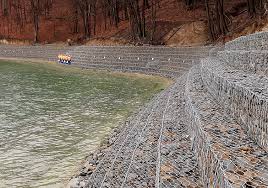Gabions are versatile and eco-friendly structures that are used for landscaping, civil engineering, or erosion management. Originating from gabiony, the Italian term “gabbione,” meaning “big cage,” gabions (gabiony) are in essence wire cages or baskets that are filled with stones, rocks or other substances. They’ve been used for centuries to stabilize soil and regulate the flow of water.
Structure and Construction
Gabions typically comprise of cylindrical or rectangular wire mesh cages, often made of galvanized steel or PVC-coated wire to prevent corrosion. The mesh is woven into a manner that makes a durable and flexible container that is capable of holding various fill materials. The dimensions of the gabion depend on the purpose, ranging from small units for landscaping to large-scale ones used for structural support.
Applications
Erosion Control: Gabions are frequently employed to stop erosion of soil along riverbanks, hillsides, and roadways. By stabilizing the ground and absorption of the force of the water flowing they reduce the risk of landslides and erosion.
Retaining Walls Gabions are effective retaining walls for controlling soil movement. They are particularly useful in areas that have steep slopes or unstable soils, offering structural support as well as aesthetic appeal.
Noise Barriers: In urban areas, gabion walls can serve to create noise barriers along roads or railway lines, effectively reduce the impact of road noise on residential areas nearby.
Landscaping and Aesthetics: Gabions are also popular in landscaping projects that create visually intriguing features like garden walls, seating spaces, or decorative elements. Their natural look and ability to blend with the surrounding environment makes them an ideal option for many architects and designers.
Advantages
Gabions provide a variety of advantages. They are more cost-effective than traditional masonry, need minimal maintenance, and are highly durable. Their permeable nature permits water to flow through, reducing pressure from hydrostatic and making them ideal for areas with high moisture content. In addition, gabions aid in plant growth, assisting in environmental restoration and increasing the visual appeal of the natural environment.
Conclusion
Gabions are an effective and adaptable solution for various landscaping and engineering challenges. Their ability to mix functionalities along with beauty makes them a useful instrument in modern construction and environmental management. Whether they are used to control erosion, retaining walls, or for decorative purposes, gabions continue to prove their value in a broad variety of uses.

